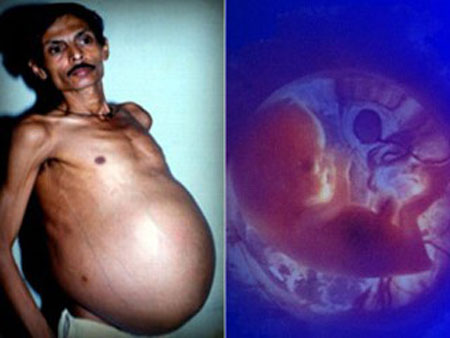Can men become Pregnant?? Not Really
Britain’s Hayden Cross, who made headlines around the world earlier this year when he announced he was pregnant by a sperm donor, has given birth to a girl.

When a 21-year-old British man gave birth to a girl this June, he joined a short list of men who have been with child, and there is a big catch. People who are anatomically born as men cannot become pregnant, not yet anyway. Most cases where men did become pregnant, they were actually transgender men who had transitioned from being women.
In this case, Hayden Cross, 21, who was born in a female body had undergone gender reassignment surgery three years ago but had retained his breasts and ovaries in order to carry his child. The first man to give birth, Thomas Beatie, was also a transgender. He was born Tracy Lehuanani LaGondino with female parts but transitioned to a male identity. In 2008, he gave birth to a baby girl, Susan.
But the full transition was paused after the UK’s state- funded National Health Service (NHS) refused to carry out a 4,000-pounds process to freeze his eggs — which he hoped would enable him to have children in the future. The former supermarket worker instead found a sperm donor via Facebook and became successfully pregnant.
“She’s perfect in every way…she is so good. I’m so lucky,” Cross was quoted as saying.
Following the birth, Cross now plans to return to complete his gender realignment as soon as possible.
The proud father was born a girl named Paige, 21 years ago. Cross, from Gloucester, had said earlier, “I faced the prospect of not becoming the man I’m supposed to be, physically, or a dad. So I didn’t feel like I had any choice but to have a baby now then get back to transitioning.”
“In September I got pregnant by a sperm donation. I found the donor on the internet. I looked on Facebook for a group and found one — it’s been shut down now. I didn’t have to pay,” Cross had said.
Cross, who used to work for Asda and in a clothes shop, aims to find a job once the baby is aged one. Gender transition treatment costs the NHS on average 29,000 pounds per patient. Thomas Beatie became the first man to give birth in the US in 2008.
Born a woman, he had a partial sex change but kept his womb and was able to conceive.
Theoretically, there is a procedure for men to undergo surgical implants. It is called Ectopic implantation, in which an embryo implanted in a man’s abdomen, and the placenta attached to an internal organ such as the bowel. Once the foetus is fully developed it can be delivered through Caesarean section. But the risks to the pregnant man and the baby are deemed too high for it to be attempted in humans.
Uterus transplants are increasingly becoming an option for women who suffer from uterine dysfunction. The procedure is still experimental even for women but has never been attempted for a man. Though the first uterine transplant was performed in 2000 in Saudi Arabia but it was only in 2014, that the first successful pregnancy was completed in a Swedish woman.
For men, even a uterus transplant would not be enough to carry a child. It would require the construction of vagina and also the pelvis, in a very intricate surgery, that has not been done till now. The first successful uterus transplants happened in India only this year, at a hospital in Pune.
In 2006, Sanju Bhagat, a Nagpur resident hit the news when he was admitted to the hospital, because of complications related to his swollen belly, that some speculated was a pregnancy. Doctors hypothesised the presence of a giant tumour.
However, a surgery revealed that the bloated tummy was a result of the remains of his half developed twin persisting in his body. Bhagat, it turns out, suffered from a rare condition, called fetus in fetu, where the fetus of a twin gets trapped in the body and feeds of the blood supply of the living fully developed twin. In Bhagat’s case, his unformed twin had developed limbs with fingernails, some hair and even genitalia.





